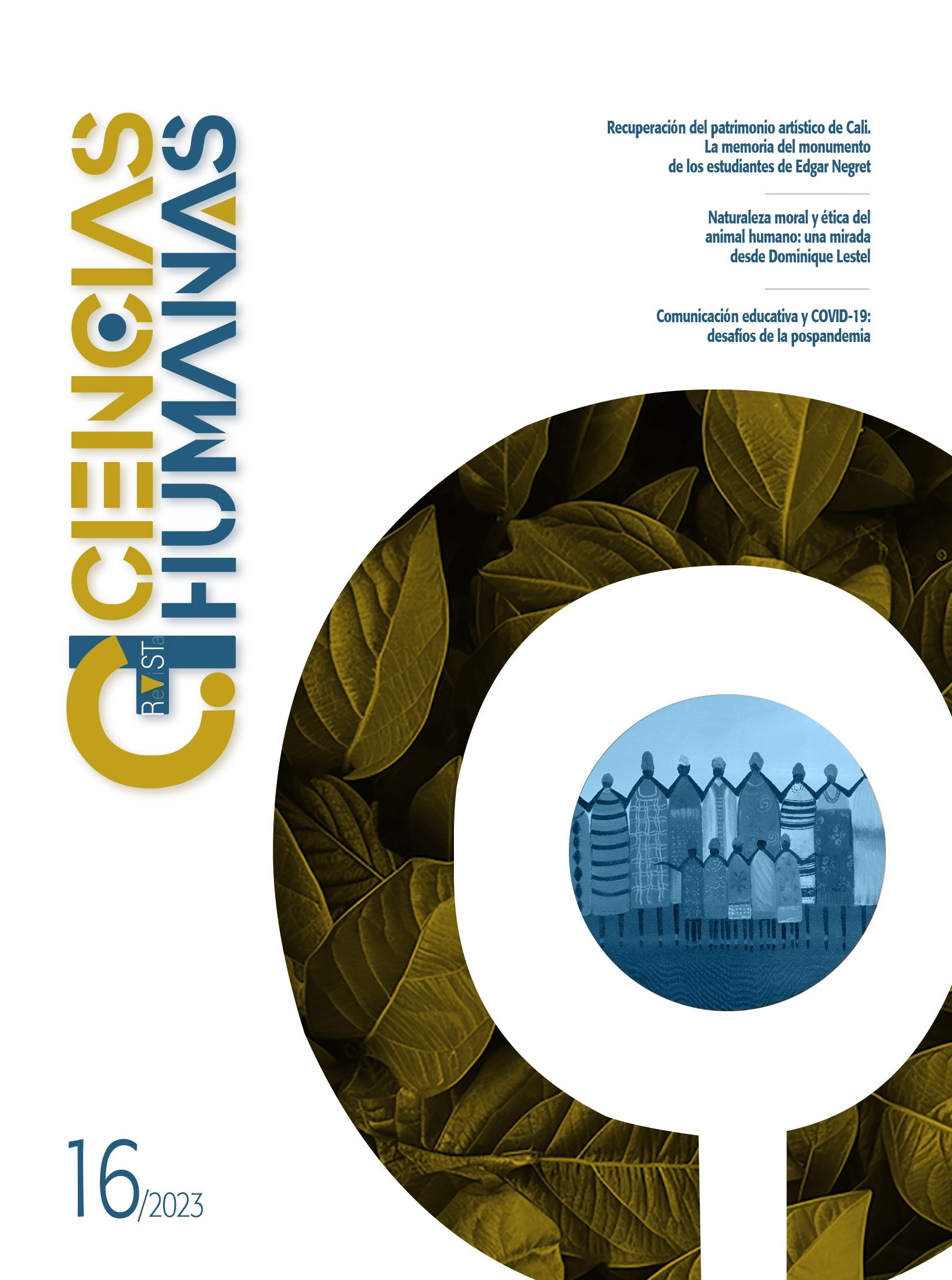The Revista Ciencias Humanas provides open and immediate access to its content, based on the principle of offering the public free access to research to aid in the greater global exchange of knowledge.
Except as otherwise stated, the content of this journal is licensed under a Creative Commons Attribution-NonCommercial-NoDerivatives 4.0 International (CC BY-NC-ND 4.0) license available at http://creativecommons.org/licenses/by-nc-nd/4.0/.
- Attribution. You must give appropriate credit, provide a link to the license, and indicate if changes have been made. You may do so in any reasonable manner, but not in a way that suggests that the licensor endorses you or your use.
- NonCommercial. You may not use the material for commercial purposes.
- NoDerivatives. If you remix, transform, or build upon the material, you may not distribute the modified material.
- No Additional Restrictions. You may not apply legal terms or technological measures that legally restrict others from doing anything the license permits.
Abstract
The internet, its social media platforms, digital networks and the various devices associated with cyberspace browsing took on formidable significance during the COVID-19 pandemic as the crucial role in educational communication for students at all levels, in all schools around the world. This digital educational role, in many ways unprecedented in its breadth and coverage, became the sole resource for connecting students with schools and their teachers, shifting the intricate teaching-learning processes to the digital realm, in what became popularised as virtual education or online education.
Keywords:
References
Cárdenas-Mariscal, M. A. (2020). La salud mental ante la pandemia de la covid-19. Plurali-dad y Consenso, 44, abril-junio, 128-135. http://www.biblioteca.cij.gob.mx/Archivos/Materiales_de_consulta/Drogas_de_Abuso/Articulos/SaludMentalyCovid19.pdf
Castañeda, L., Salinas, J. y Adell, J. (2020). Hacia una visión contemporánea de la tecnología educativa. Digital Education Review, 37, 240-268. https://revistes.ub.edu/index.php/der/article/view/30136
Garrison, D. R. y Anderson, T. (2005). El e-learning en el siglo XXI. Investigación y práctica. Barcelona: Octaedro.
Novoa, A. (2009). Educación 2021: para una historia del futuro. Revista Iberoamericana de Educación, 49. https://rieoei.org/historico/documentos/rie49a07.htm
ONU (2020). Informe de políticas: La educación durante la COVID-19 y después de ella. https://www.un.org/sites/un2.un.org/files/2020/09/policy_brief_-_education_during_covid-19_and_beyond_spanish.pdf
Peña, I. (2020). Los deberes atrasados del sistema educativo: digitalización, segregación y conciliación. CTXT, Contexto y acción, 261. https://stecyl.net/ los-deberes-atrasados-del-sistema-educativo-digitalizacion-segregacion-y-conciliacion/
Salinas-Ibáñez, J. (2020). Educación en tiempos de pandemia: tecnologías digitales en la me-jora de los procesos educativos. Revista Innovaciones Educativas, 22, 17-21. DOI: https://doi.org/10.22458/ie.v22iespecial.3173
Unesco (2020). Education: From COVID-19 school closures to recovery. https://en.unesco.org/covid19/educationresponse
Unicef (2020). COVID-19: Are children able to continue learning during school closures? https://data.unicef.org/resources/remote-learning-reachability-factsheet/
Universidad Nacional Autónoma de México -UNAM- (2020). Programa de salud mental de la UNAM. https://saludmental.unam.mx/









